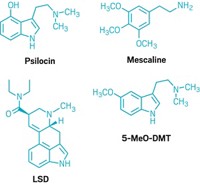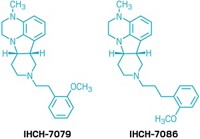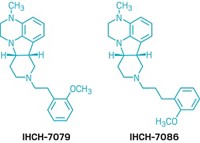Advertisement
Grab your lab coat. Let's get started
Welcome!
Welcome!
Create an account below to get 6 C&EN articles per month, receive newsletters and more - all free.
It seems this is your first time logging in online. Please enter the following information to continue.
As an ACS member you automatically get access to this site. All we need is few more details to create your reading experience.
Not you? Sign in with a different account.
Not you? Sign in with a different account.
ERROR 1
ERROR 1
ERROR 2
ERROR 2
ERROR 2
ERROR 2
ERROR 2
Password and Confirm password must match.
If you have an ACS member number, please enter it here so we can link this account to your membership. (optional)
ERROR 2
ACS values your privacy. By submitting your information, you are gaining access to C&EN and subscribing to our weekly newsletter. We use the information you provide to make your reading experience better, and we will never sell your data to third party members.
Neuroscience
Sensor sheds light on hallucinogenic activity
Modified receptor differentiates psychedelics from similar compounds that don't cause hallucinations
by Alla Katsnelson, special to C&EN
April 29, 2021
| A version of this story appeared in
Volume 99, Issue 16
Psychedelic substances like psilocybin get some hype as recreational drugs, but recent studies suggest that they may treat depression and other neuropsychiatric conditions, perhaps by forging new connections between neurons. The trouble is that such compounds spark hallucinations, which complicates their therapeutic use. Researchers have now developed a tool that can identify compounds that are structurally very similar to psychedelics but don’t cause hallucinations in mice. And they have found a promising candidate that eases depressive symptoms in mice.
Many psychedelic compounds act by binding to the serotonin 2A receptor (5-HT2AR), changing its conformation. Closely related molecules may offer therapeutic benefits without causing hallucinations, says David E. Olson, a chemical biologist at the University of California, Davis. Such compounds also bind to 5-HT2AR, inducing a different conformational change. “What we really needed was a high-throughput assay for determining whether or not a compound is likely to produce hallucinations in people,” Olson says.
Olson and biochemist Lin Tian, also at UC Davis, developed a biosensor called psychLight to do just that (Cell 2021, DOI: 10.1016/j.cell.2021.03.043). To make psychLight, Tian and her team encoded the instructions for making the 5-HT2AR and a fluorescent marker into the genetic material of a virus that can deliver the sensor anywhere in the mouse brain. They targeted the sensor to the frontal cortex—home to abundant serotonin activity—then gave the mice a behavioral task that prompts serotonin release. The sensor lit up, demonstrating its sensitivity. “With this sensor, you use an optical readout to measure the conformational change in the receptor induced by a ligand”—be it serotonin or another 5-HT2AR ligand, Tian says.
The researchers first tested psychLight on a few dozen 5-HT2AR-binding compounds with known properties and found that the sensor could accurately tell whether they were hallucinogenic. They then ran the assay on a library of 40 compounds with unknown hallucinogenicity. They identified several as nonhallucinogenic and confirmed this via an established test in mice. One compound, AAZ-A-154, also showed antidepressant properties in the mice.
“Beautiful work,” says Javier González-Maeso, a biophysicist at Virginia Commonwealth University, who was not involved in the study. “The utility of the fluorescent sensor as a new tool to screen for new 5-HT2A agonists in vitro and most importantly in vivo is impressive.”
Delix Therapeutics, which Olson cofounded, has licensed AAZ-A-154 for clinical development, and he expects the approach to yield more compounds. But he also hopes this tool will help researchers understand exactly how potential neuropsychiatric treatments affect the brain. “With psychLight, we now have the potential to test hundreds of compounds to really understand how the structure of small molecules impacts the function of psychoactive compounds,” Olson says.





Join the conversation
Contact the reporter
Submit a Letter to the Editor for publication
Engage with us on Twitter